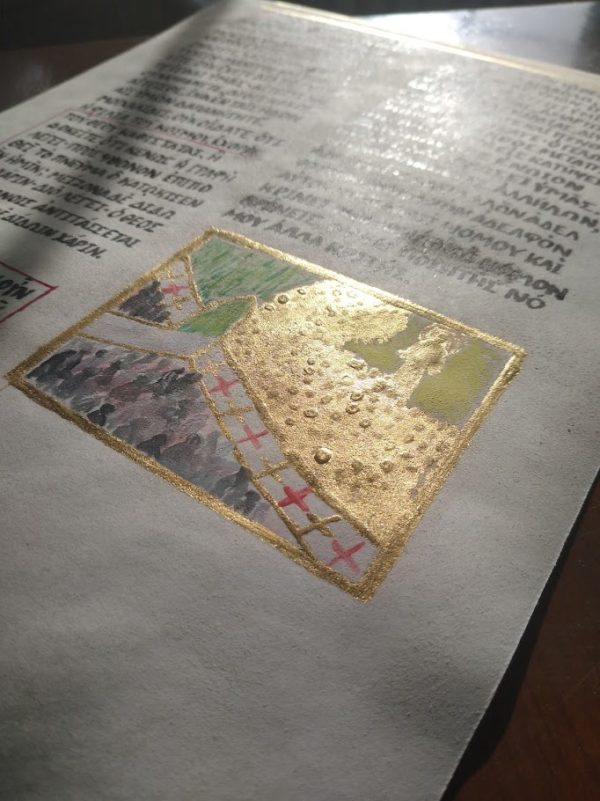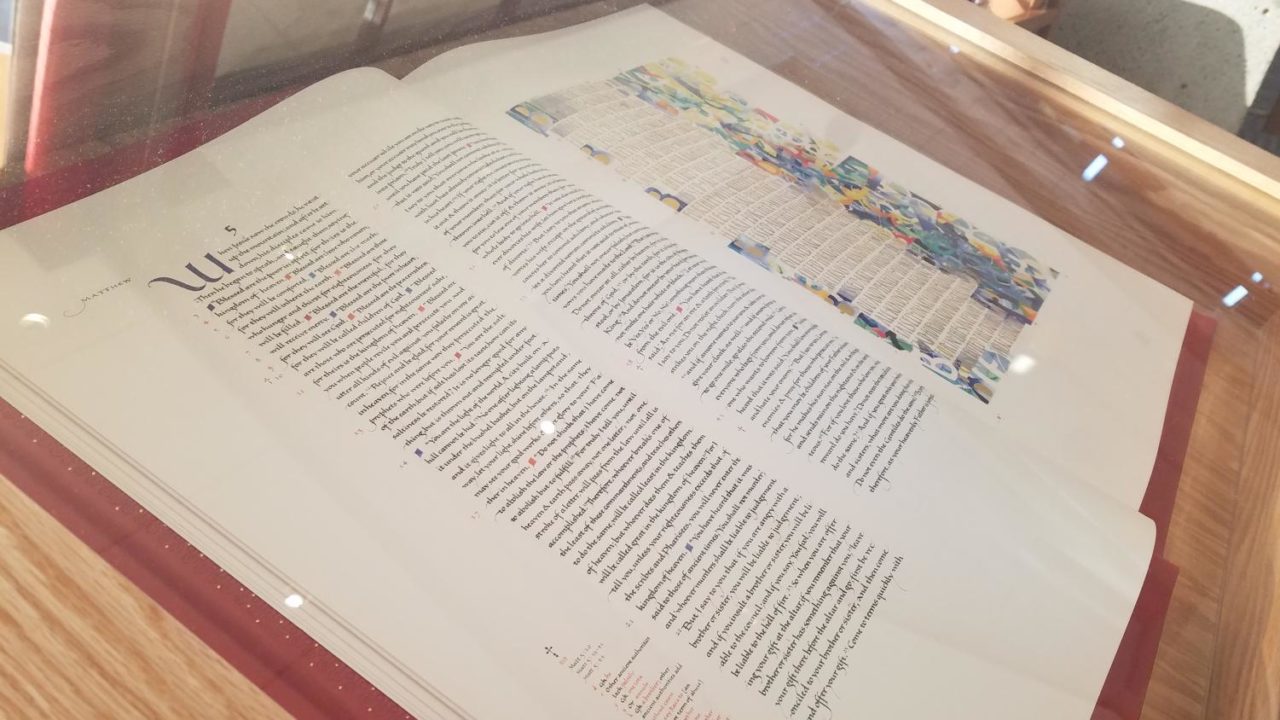How Marian University Uses the Heritage Edition to “Make Discoveries” About Art, Faith and the Core of Spiritual Being
Students and community continually inspired as university pursues full acquisition
“Every teacher struggles with silence,” says Mark Reasoner, Ph.D., with a measure of self-awareness. Reasoner is referring not only to the difficulties of maintaining students’ attention, but how instructors can utilize it: Once you’ve shown them something worth paying attention to, what do you want them to do with it?
A Professor of Biblical Theology at Marian University in Indianapolis, Reasoner has his own methods. “I try to let them make the discoveries,” he says.
Readers of The Saint John’s Bible blog know that institutions of learning around the world use it to connect spiritual and college life across campus; to connect curriculum to larger ideas about artistic expression – usually with guidance and ground-level introduction. What Reasoner presents is a ‘both feet first’ way to examine The Saint John’s Bible.
“I try not to tell them what I see in it right away,” he says. “It’s better that they make some connections [on their own]. They do some thinking … They make the discoveries first.”
Those discoveries have ranged from the very human to the overwhelmingly existential. “The Saint John’s Bible provides new ways of connecting with the transcendent,” Reasoner says. “The transcendent means what’s beyond us. It includes God and it includes the angels. I think the Christian scriptures still give people openings to think about the transcendent, to think about a higher power.
“And The Saint John’s Bible, with the care that’s gone into it and the illuminations and the quality of the material, all that prepares people to open up to that transcendence.”
Expanding Marian’s Footprint
Ed and Peggy Bonach are the sponsors of Marian University’s A Year With The Saint John’s Bible and have committed to a matching donation campaign to help the university acquire the set permanently.
Ed, an alumnus of Saint John’s University, says he’s proud of being able to see the project come to fruition at Marian. “It seemed like a good way to connect two Catholic universities that we believe strongly in and are doing good things,” he says of his and Peggy’s support.
“Marian University continues to expand its footprint, so I believe taking The Saint John’s Bible on the road can be very impactful not just in recruiting future students, but to attract and gather a diversity of people in different parts of the country.”

The Heritage Edition Reignites the Artist Within a History Student
Nicholas Evans is a Marian student (majoring in History and Catholic Studies with a minor in German), budding calligrapher and docent for the university’s Heritage Edition. The Saint John’s Bible has been a focus of his in each of those roles.
Nicholas originally experimented with calligraphy in high school. “I started with one of those cheap pen sets, kind of messed around with it, and then I bought a cheap dip pen set,” he remembers. “Then kind of didn’t do it for a while” – until the Heritage Edition reached campus, sending his pen back to paper.
“That started to pique my interest again and now I do it fairly seriously,” Nicholas says. Since beginning his work with The Saint John’s Bible, he says he’s penned his own Christmas cards and even created an illuminated Greek manuscript for one of Reasoner’s courses.
With a unique perspective as a member of the next generation of calligraphic artists working closely with a modern work like The Saint John’s Bible, Nicholas notices the dual purposes of the book itself: to give new life to an ancient art form while celebrating the principles that make it so timeless. “It’s a very, very legible script,” he notes. “But also it’s very alive … If you take time to stop and analyze the script, it’s hard to recreate it because it’s very organic.
“Calligraphy, at its essence, is just handwriting,” Nicholas says. “Medieval scripts were used for practical purposes and [calligraphers] made them beautiful.”
Pursuing Acquisition to “Spur Spiritual Thinking” for Years to Come
Nicholas’s story represents the brightest hopes Bonach and Reasoner have for the continued use – and intended acquisition – of the Heritage Edition at Marian.
“It’s making an impact,” Bonach says. “It’s reaching our youth, encouraging their spiritual thinking and exploration. That’s one of the strengths of The Saint John’s Bible, and I know Marian has done that to really spur spiritual thinking.”
“Everybody’s interested in it,” Reasoner says. “Everybody’s positive. My sense is that even students who don’t consider themselves interested in church or anything like that can still get drawn in by some of these illuminations. Students are very positive [about having the Heritage Edition on campus] and it’s very apt for helping them make discoveries.”


